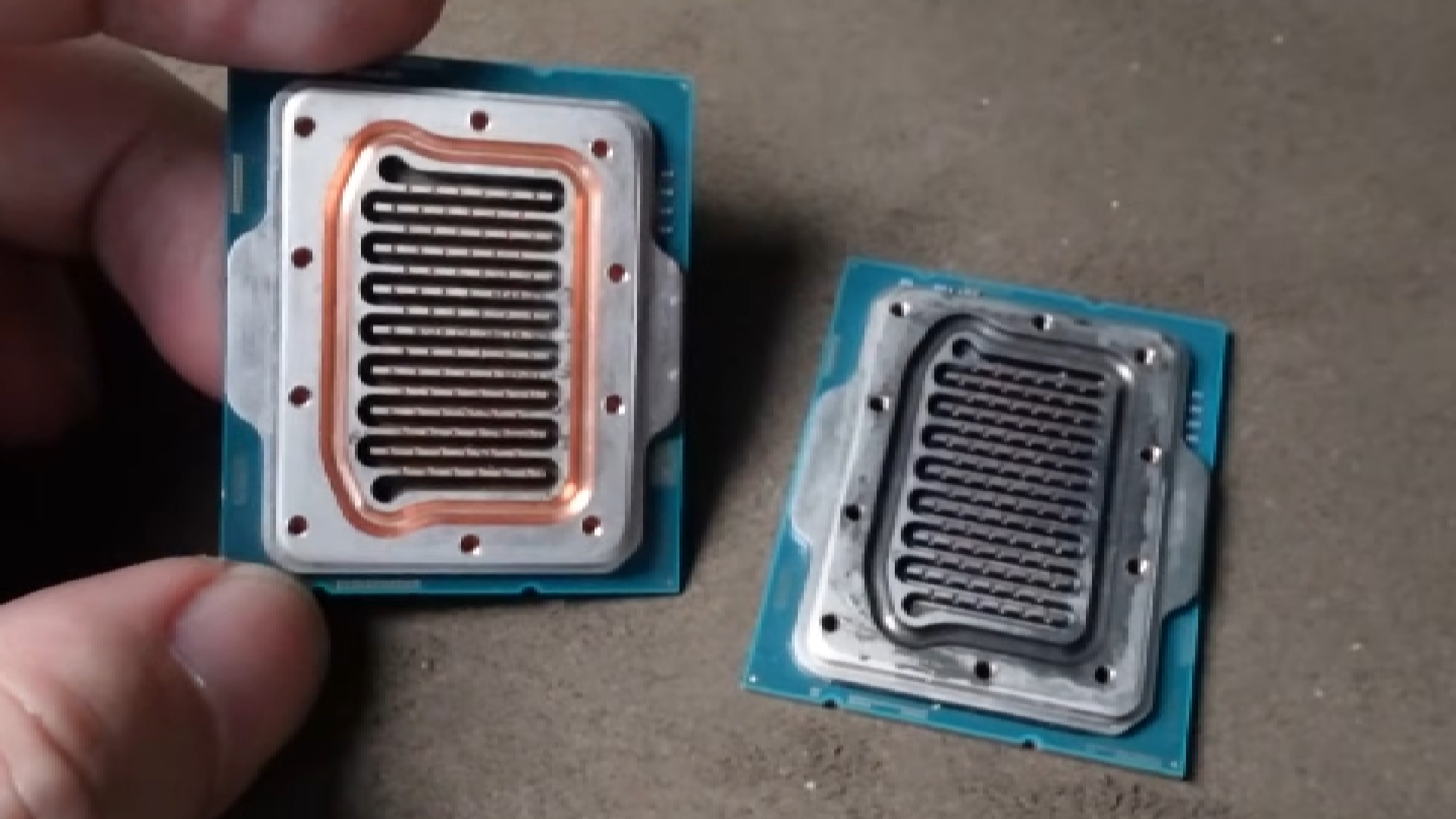
Of course, why didn't I think of that?
If the concept of CPU delidding fills you with dread, I think you might also be a little squeamish about this one. A modder has created a functional liquid cooling system by machining straight into an Intel CPU heat spreader—and, with the help of a plastic panel and a handy bucket, it actually works. To a fashion, at least.
On the surface, the idea actually makes a whole lot of sense (via Wccftech). After all, a water block is a piece of material attached to the top of a chip with channels cut within it to allow liquid to flow through, removing pesky heat from the chip underneath with the help of a pump and radiator system.
CPUs already have metal heat spreaders on top to make contact with the cooler, so why not cut out the middle man and machine cooling channels straight into the top of the heat spreader itself? That’s exactly what intrepid modder octppus set out to do, posting the results on YouTube for us all to enjoy/watch with our heads in our hands.
The real genius of this design is affixing a transparent plastic panel and radiator hose fittings to the outer edge of the heatspreader, making it a self-contained water block in its own right. At first glance it looks like a nifty little solution to an age-old cooling problem, at least on paper.
There are a couple of drawbacks, however: One, the Intel Core i9 14900KS used here is quite the heat-producing chip to begin with, from multiple different on-die areas thanks to its many cores. 24 of them, in fact: eight Performance- and 16 Efficient-cores.
So, rather than spreading the heat out relatively evenly from those cores across a flat surface, the core temperatures instead appear to spike when the pump speed is reduced and the flow slows down around those CNC-machined channels.
And two? Our intrepid modder neglected to create a dedicated cooling reservoir, instead opting to dump the fluid into a plastic bucket. It’s real Heath Robinson stuff, this. Hilarious, though, I will admit.
Well, you have to try these things, don’t you? Or not, as the case may be. Given the drawbacks here, I can’t see machining straight into the heatspreader becoming the new liquid cooling method de rigueur, although it’s perhaps more practical in some ways than liquid nitrogen. And, y’know, much less effective, too.
Plus, it’s not the first direct die water cooling solution we’ve seen. EmCool’s microfluidic block appears to operate on a similar principle, once attached to a delidded chip.
Still, I salute you, octppus. Through your experimentation, all of us will learn. Or at the very least, realise that the heatspreaders on top of modern chips are surprisingly robust, and that it’s probably a good idea to leave them intact.
Best CPU for gaming: Top chips from Intel and AMD.
Best gaming motherboard: The right boards.
Best graphics card: Your perfect pixel-pusher awaits.
Best SSD for gaming: Get into the game first.






